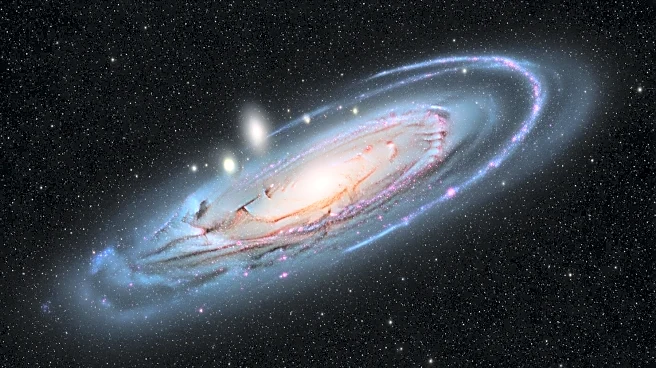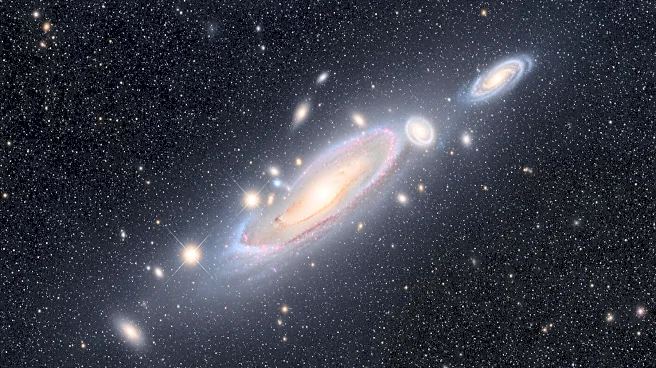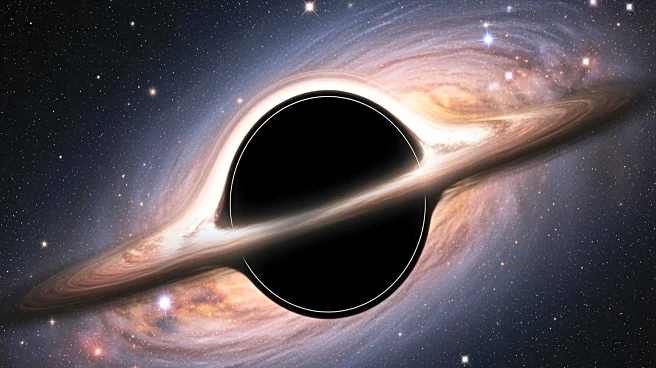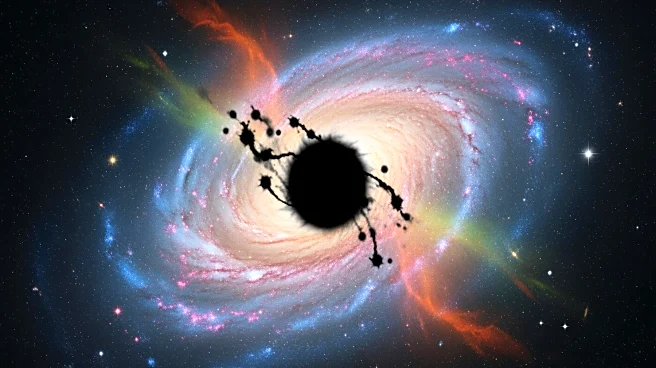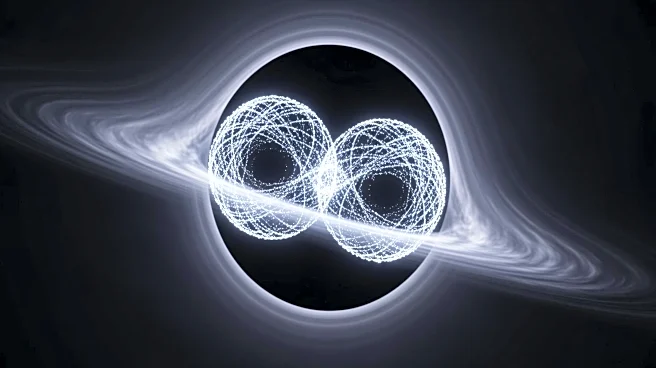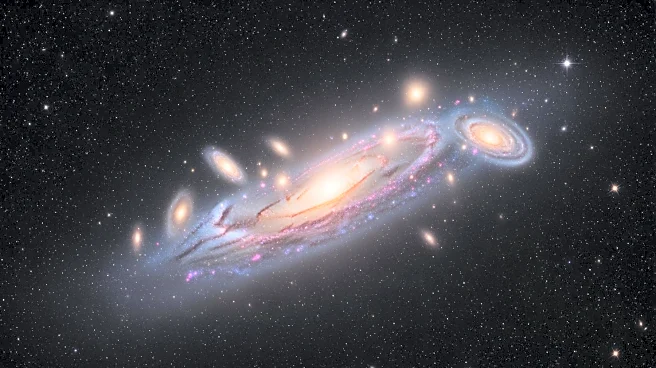What's Happening?
A recent study published in Physical Review Letters proposes that dark matter, traditionally considered invisible, might interact with light in a way that dims the visibility of stars. This phenomenon,
termed the 'lampshade effect,' suggests that clumps of dark matter could act like lampshades, blocking some light from stars, making them harder to detect with current telescopes. The study, co-authored by Melissa Diamond from Queen's University in Canada, challenges the prevailing theory that dark matter is composed of WIMPs (Weakly Interacting Massive Particles), which do not emit or interact with light. Instead, the study focuses on MACHOs (Massive Astrophysical Compact Halo Objects), which could include dense objects like neutron stars or black holes. These objects, made of ordinary matter, might emit little or no light, thus acting as cosmic lampshades. The study suggests using existing data sets and microlensing techniques to detect these dimming events, potentially identifying MACHOs without new telescope technology.
Why It's Important?
Understanding dark matter is crucial for comprehending the universe's structure and evolution. The 'lampshade effect' offers a novel approach to detect dark matter, which constitutes about 85% of the universe's mass. If MACHOs are confirmed as a significant component of dark matter, it could reshape scientific theories about cosmic structures and the universe's composition. This method could utilize existing astronomical data, making it a cost-effective way to advance dark matter research. The findings could also refine current models by eliminating less viable theories, thereby narrowing the focus of future research. The implications extend to astrophysics and cosmology, potentially influencing how scientists approach the study of galaxies and the universe's expansion.
What's Next?
Astronomers may begin analyzing existing data sets, such as those from the Optical Gravitational Lensing Experiment (OGLE), to search for dimming events indicative of MACHOs. This approach could lead to new discoveries about dark matter's nature and distribution. If successful, the 'lampshade effect' could become a standard method for dark matter detection, prompting further studies and potentially new theories about the universe's unseen components. The scientific community might also explore the development of more sensitive instruments to detect these subtle interactions between dark matter and light.
Beyond the Headlines
The study's implications extend beyond immediate scientific discovery, touching on philosophical questions about the universe's hidden aspects. It challenges the notion of invisibility in cosmic phenomena, suggesting that what is unseen might still exert influence. This could lead to broader discussions about the limits of human perception and technology in understanding the cosmos. Additionally, the study might inspire interdisciplinary research, combining physics, astronomy, and materials science to explore new ways of detecting and understanding dark matter.



